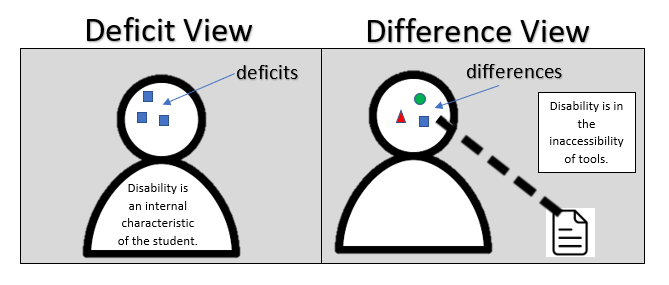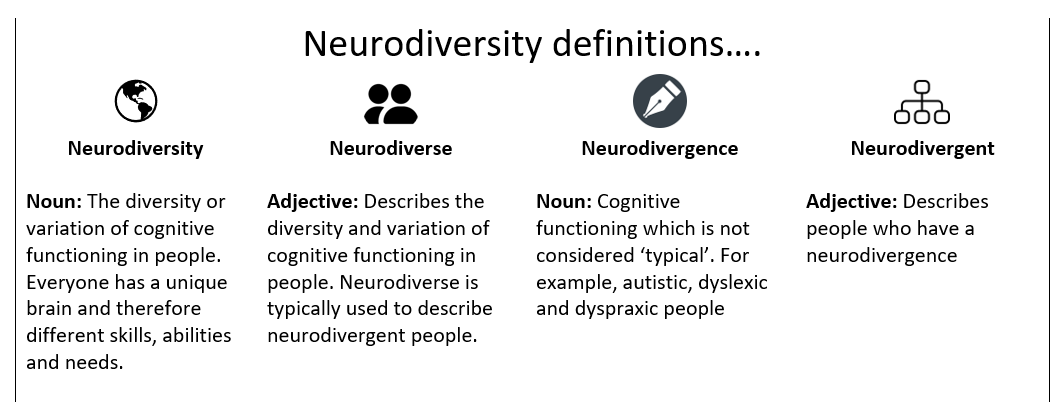Neurodiversity was coined in the 1990s, by sociologist Judy Singer to explain the natural variation that could be seen across all human beings. It became the basis of a social movement to position variations in cognitive functioning as a natural element of humanity, in direct contrast to commonly used deficit-based interpretations.
The term neurodiversity is sometimes used to refer to a small group of people with different cognitive functioning, in direct contrast to the proposed ‘neurotypical’ person. However, this is inaccurately. There is no neurotypical person, in much the same way as there is no biotypical element of biodiversity (Singer, 2020).
Neurodivergence therefore is the noun used to refer to a wide group of individuals whose cognitive functioning is perceived as different from the Predominant neurotype (PNT).
This is a growing area of research, and as such there is no agreed definition of which conditions fit within the neurodivergence umbrella. But as it specifically relates to cognition, it is generally understood that it should include conditions that allow the individual to think differently, or process information differently to the perceived ‘norm’.